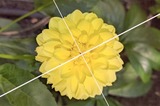
Learn about many ways to combine art and science as we observe the world around us. We often think of scientists as methodical and precise, and artists as free-willed, impulsive creators. But did you know that some art has science packed right into it? And that artists throughout history have helped scientists conduct their work? Learn about the photography of Berenice Abbott who documented the changing New York skyline with photographs of architecture and urban design of the 1930s, and science interpretation in the 1940s to 1960s. Learn how to use the sun to air dry your salt dough creations and explore papier-mâché.
- Subject:
- Living Systems and Processes
- STEM/STEAM
- Visual Art
- Material Type:
- Activity/Lab
- Lesson
- Visual Media
- Author:
- Trish Reed
- Date Added:
- 05/27/2021
